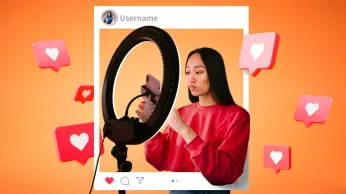10 Popular Channel Incentive Programs that Works Perfectly for FMCG/FMCD Businesses
Looking to engage your distributors, resellers, and retailers better? Discover 10 high-performing channel incentive programs for FMCG/FMCD that drive sales, increase partner loyalty, and streamline your distribution strategy across general and modern trade.
On this page
The FMCG industry doesn’t slow down for anyone. With razor-thin margins, shifting consumer preferences, and fierce competition for shelf space, success hinges on more than just great products; it depends on the strength of your channel partner network.
From large distributors and sub-distributors to retailers, your extended distribution ecosystem plays a critical role in ensuring product visibility, availability, and sales velocity.
Yet, navigating this landscape comes with its own set of challenges. Private labels are eating into market share, channel conflicts are on the rise, and while digital adoption is progressing, many partners still face friction when it comes to engaging with tech-driven loyalty solutions.
The complexity of managing both general trade (distributors, wholesalers, kirana stores) and modern trade (supermarkets, e-commerce, and quick commerce) only adds to the pressure.
In such a dynamic environment, building strong, long-term relationships with channel partners isn’t just good business — it’s essential. And just as brands rely on customer loyalty programs to retain consumers, they need well-designed channel incentive programs to engage, reward, and retain their partners.
In this blog, we explore 10 proven channel incentive programs that work exceptionally well for FMCG and FMCD businesses. Whether you're looking to boost sales, increase partner engagement, or strengthen your brand’s presence across retail channels, these incentive models are built to deliver results.
Types of channel incentive programs popular in FMCG/FMCD Industry
Your channel is the backbone of your business. Hence, it is crucial to pick a channel incentive program for your partners that keeps them motivated.
But the question is, what type of channel incentives should you opt for? What goes well with your partners? How can you keep them motivated to generate more sales for your business?
To answer your questions and keep you away from perplexities, we have listed the various types of channel incentive programs with examples. These will give you a complete picture of what works in the traditional FMCG/FMCD world.
1. Sales incentives
Sales incentives are a way to reward channel partners once they reach or exceed a specific sales goal. It is not only the most widely used incentive program in the FMCG/FMCD sector but also a proven technique.
Sales incentives are usually given as point-based rewards, gift cards, single-use debit cards, etc.
- Goals: Sales incentives help the company scale in all directions. It depends on the purpose they are being used for. You can leverage sales incentives to meet short-term (revenue targets) and long-term (build brand loyalty) business goals.
- Challenges: Since sales incentives focus only on ‘sales,’ partners often concentrate on revenue-generating activities while losing interest in other business aspects like building relationships. They are expensive, which makes it hard for small businesses to afford them. Small companies new to it might not have the budget to afford a sales incentive program.
Additionally, partners reaching $1 million in monthly recurring revenue received all-expenses-paid trips for two to destinations of their choice.
This initiative not only incentivized sales growth but also fostered long-term loyalty among partners by recognizing and rewarding their achievements.
2. SPIFs or SPIFFs (Sales Performance Incentive Funds)
According to HubSpot, SPIF is a short-term, incentive-based initiative that motivates sales representatives to achieve business targets.
The concept of SPIF boils down to telling your sales reps, "If you move X amount of product or schedule X amount of demos or close X amount of deals within a fixed timeframe, you get a reward."
Most SPIF incentives are financial, but prizes, vacations, and recognition can all serve as the basis for an effective SPIF program.
Gift cards are also a safe bet, but they lack the expression of thoughtfulness at times. If salespersons need to speak to multiple decision-makers to close a deal, it will warrant a lot of phone/call time.
A set of noise cancellation headphones that make their sales calls better, a new ultra-wide monitor or a subscription to a wellness program to help them meditate and focus would make for great reward options. The only limit on incentive options is your imagination.
- Goals: The main aim of SPIFs is to meet sales goals for a particular product or service quickly. In addition, SPIFs increase channel partner engagement and help boost low performance. One can also use them to accelerate pipeline, finish old stock, support a product release or take advantage of new market opportunities.
- Challenges: There’s a chance that giving SPIFs can create unhealthy competition amongst the partners. While some channel sales reps might try to get the most deals, some might not even try much because of the program's competitive nature. There’s also a chance that sales reps might not work beforehand in anticipation of a SPIF in the future, which is called sandbagging.
Samsung MVP program partners are eligible to receive numerous benefits to help them boost their business prowess. These include financial incentives such as target bonuses (SPIFs), market development funds, promotions, access to online and offline training.
3. MDFs (Marketing Development Funds)
Marketing Development Funds are incentives rolled out to channel partners to increase future sales by creating brand awareness. Unlike other incentive programs, MDFs are provided in advance to selected partners who agree to use the said funds for the specific purpose they’re allotted for.
These funds are generally allocated for channel partners to perform specific ancillary marketing activities. These could be developing marketing materials like email lists or organizing educational and lunch-and-learn events.
- Goals: The goal of MDFs is to help partners build sales and marketing campaigns to increase brand awareness. An ancillary goal is to build a trust factor between the business and its partners. If used correctly, MDFs can make developing strongholds in local markets easier.
- Challenges: An MDF is an investment in a plan that a third party executes. So, it becomes difficult to monitor the use of the money rolled out. Estimations can go haywire; execution of the plan may cause changes in the use of the MDF. It’s almost like placing a bet with no certainty about the outcome.
4. Rebate incentives
A rebate is a refund or a money-back. Businesses encourage channel partners to increase their orders of products or spend larger amounts of money investing in stock from these businesses by offering rebates. Rebates are rolled out either as refunds or in the form of rewards or points.
Rebates are one of the oldest and arguably one of the most effective forms of incentivization. But changing times call for innovation in rebate programs, and here’s where we can help you transform the rebates and refunds game.
- Goals: Like all other incentives, the primary purpose of a rebates program is to increase sales quantity, in this case, specific products or services. You can also use rebates to encourage data collection that helps businesses create more effective marketing strategies in the future.
- Challenges: Management of rebate and reward programs are a challenge for companies. Unless a well-functioning solution is in place, running an effective program is almost impossible. The other side effect of rebates is the likelihood of unhealthy competition between the partners.
The rebate incentives are structured to align with specific sales targets and product lines, ensuring that partners are motivated to focus on strategic offerings.
This approach not only boosts sales but also strengthens the relationship between Netgear and its channel partners by providing tangible benefits for their efforts.
5. Co-operative marketing funds
Co-op marketing funds are reimbursement of costs incurred in conducting a marketing initiative - usually shared by the company and channel partner. MDFs are a pre-initiative incentive, whereas co-operative marketing funds are given out after completing the marketing activity.
- Goals: A cooperative marketing fund aims to get both parties (e.g., distributor and partner) equally devoted to a common goal. The common goal is market expansion.
- Challenges: An understanding and an element of trust is a must to run a successful Co-Op Marketing Fund program. If there is no understanding between the two, rolling out funds after the program could lead to a strained relationship.
6. Deal registration incentives
The incentives that are tied with the size of the deal are called deal registration incentives. It gets difficult for sales teams and channel partners to push sales on high-cost products.In such cases, deal registration incentives can effectively motivate partners to make sales. The more conversions or deals registrations sales reps can make, the higher their incentives.
- Goals: Encouraging on-ground sales reps is the primary goal of this kind of program. Incentivizing with money is a great way to keep sales reps engaged and motivated. High-worth incentives give partners a reason to participate and give their best.
- Challenges: Since deal registration incentives are targeted at and work best when rolled out to individuals who make the sale happen, it can get hard for the business to keep track of the deserving candidate and ensure that the incentive reaches the right person. Another possible challenge is the change of hands or roles that can occur during the deal registration process where it becomes difficult to identify and attribute the deservedness of the incentive to one person, making participants reluctant.
7. Value-added reseller incentives
Value-Added Resellers (VARs) Incentives are rolled out to channel partners to allow them to add an extra feature, product, or integration to improve an already existing product - yours - as a part of their resale activity. These value-added products become a ‘one-stop solution’ for customers’ needs. Adding value at the sales level helps encourage the purchase.
- Goals: Your on-ground channel partners have the best view of the market and customers. By incentivizing partners to add value to your product, you are working to increase your stronghold over a particular market. The creation of product and brand enthusiasm is another goal of VAR Incentives.
- Challenges: Creating trust with Value Added Resellers becomes a challenge. Allowing another company to add value to your product means extending freedom. Running a VAR program means having intermediaries involved. Such incentive programs decrease profit margins and may not be as lucrative as other incentive programs. If gathering customer data is a goal, acquiring that information from VARs is a trade secret they may not want to share.
8. Referral incentives
As the name suggests, when channel partners identify and refer potential customers, you can reward them with referral incentives. Referrals add credibility that encourages purchase.
- Goals: Referral incentives have a twofold objective. The first is to encourage channel partners to act as brand ambassadors. The second is to give you more customers and sales. After all, word-of-mouth referral is the most powerful marketing tool.
- Challenges: Efficiently tracking referrals and rolling out incentives can pose a challenge. Running a referral incentive program is also capital-heavy. A business must have enough revenue to invest in to ensure growth.
The importance of referral marketing can’t be written off, but clubbing it with Plum's referral rewards programs will blast it off. Here’s how to do that.
Successful referrals that lead to new business opportunities are rewarded with incentives such as financial bonuses, discounts, or access to exclusive resources.
This initiative not only expands Cisco's network but also strengthens relationships with existing partners by recognizing their contributions to the company's growth.
9. Enablement and training incentives
Enablement and training incentives are the incentives given for the time your partners invest in learning about your product to make more sales. You must equip your channel partners with the best education to help them answer customer questions confidently.
A channel partner who doesn’t know what they’re selling can make you look bad. Enablement and training incentives are a long-term investment in building a reputation. These incentives can be set up as points-based rewards or tied with other performance-based incentives such as retreats and getaways.
- Goals: The primary purpose of enablement and training initiatives is to educate your channel partners about your product and brand. The more they learn about your product, the more they want to sell it. You can also inform your partners about your ethos to make a more profound impact.
- Challenges: As good as your training and enablement programs may be, there is never a way to ensure that what you teach is being used. It is challenging to check implementation and measure the results of execution. It’s an investment running on faith with the hope of favorable returns in the long run.
10. Loyalty incentives and partner retention
You might have partners who are already performing their best and don’t need any of the above incentives to stay ‘motivated.’ They may already be skilled and very competent. But they are also high in demand.
Partner Retention incentives are vital to ensure that you don’t lose these gems to the ever-growing competition. That’s when you roll out these initiatives - to show that you value your partners and their loyalty and to encourage them to continue the good work.
- Goals: Establish a connection with your channel partners to earn their loyalty by showing that their contributions are highly valued. Partner retention is thus the primary goal. These incentives also help you maintain a certain brand and business image which can prove beneficial.
- Challenges: Loyalty incentives are no guarantee of channel partner retention. They are you fertilizing the soil without knowledge of whether or not your tree will fruit.
How to choose the right type of channel incentive program
Different incentive programs serve different purposes. What works for one business may not work for others. There is a possibility that it might even hamper growth. So it becomes important for you to define your purpose and pick an incentive program that caters to your purpose.
Ask yourself what it is what you expect from your partners - Is it more sales, expanding your market, being knowledgeable about your products and offerings, creating buzz around a new product, or maybe something else?
Here’s a quick reference table that could help you understand which type of channel incentive program serves what purpose:
Type of Incentive Program | To Be Used |
Sales Incentive | If you want to keep your partners motivated and morale high — all your sales targets should be tied to sales incentives. |
SPIFs (Sales Performance Incentive Funds) | If you're trying to boost sales in a short time. Useful for pushing sales teams to hit targets, especially when clearing out old inventory. |
MDFs (Market Development Funds) | If you're launching a new product and want partners to create buzz and visibility using allocated marketing funds. |
Rebates | If you want to drive sales of a specific product by influencing both seller and buyer preferences. |
Co-ops (Co-operative Marketing Funds) | When you want partners to share both the rewards and risks of business efforts. Co-ops work as reimbursements, unlike the upfront nature of MDFs. |
Deal Registration Incentives | If you're in a high-value deal business (e.g., real estate, automobiles), incentives tied to deal closures are key. Popular rewards include foreign trips. |
Value-Added Resellers Incentives | If you aim to promote cross-selling across multiple products by rewarding bundled solution selling. |
Referral Incentives | If increasing market reach and penetration is a priority, referral incentives can help expand your partner base and reach. |
Enablement and Training Incentives | If your goal is to ensure partners are well-informed about your products. These are essential in today’s market where customers demand detailed product knowledge. |
Loyalty Incentives and Partner Retention | If you want to build lasting relationships with high-performing, in-demand partners by rewarding long-term engagement and loyalty. |
Conclusion
Every partner interaction is an opportunity — to strengthen loyalty, inspire performance, and drive competitive advantage. But in a sector as layered and complex as FMCG/FMCD, managing these opportunities at scale is anything but simple. Fragmented distribution networks, diverse partner profiles, and rising channel conflict all demand a smarter, more agile way to engage.
That’s exactly what Loyalife delivers.
Loyalife is purpose-built for the demands of the FMCG ecosystem, empowering brands to launch and scale incentive programs that are as strategic as they are seamless. Whether you’re working with kirana stores, distributors, modern retail chains, or quick commerce platforms, Loyalife brings everything under one digital roof — and turns chaos into coordination.
Here’s how Loyalife redefines channel incentive management for FMCG brands:
- Unified partner visibility: Manage and engage your entire channel — across general trade and modern trade — with centralized control and real-time insights.
- Segmented, behavior-based rewards: Design tiered incentive programs based on partner type, sales milestones, or geography. Personalize experiences for everyone from top-performing retailers to emerging resellers.
- Automated workflows: From claims validation and reward disbursal to nudges and performance updates — automate it all without losing the human touch.
- Flexible reward marketplace: Offer partners more than just cash. With access to a wide range of rewards — digital gift cards, travel experiences, merchandise, and more — partners feel recognized and valued.
- Insights that drive growth: Use built-in analytics to identify which incentives work, where engagement dips, and how to continuously improve your program.
With Loyalife, FMCG brands can build high-performance partner ecosystems that scale with precision and purpose.
It’s time to stop managing incentives in silos and create loyalty that lasts.









